 |
|
|
|
|
|
|
|
 |
 |
 |
 |
|
|
 |
 |
 |
|
|
|
|
|
|
 |
THE LAST REBEL starring Joe Namath.
Must really suck!
LOL!
|
|
|
|
|
 |
 |
 |
Posted: |
Jun 21, 2014 - 6:46 PM
|
|
|
|
By: |
Bob DiMucci
(Member)
|
An avowed devotee of American detective thrillers, French journalist-filmmaker Philippe Labro based WITHOUT APPARENT MOTIVE (1971) on one of Ed McBain’s 87th Precinct novels, Ten Plus One, changing the locale from a bustling U.S. metropolis to the French Riviera and structuring the film with homages to Raymond Chandler, Dashiell Hammett, and the hard-boiled Humphrey Bogart pictures of the 1940s. The film starred Jean-Louis Trintignant, Dominique Sanda, and Laura Antonelli, and had a effective supporting role by writer Erich Segal. Ennio Morricone scored the film. Upon the movie’s Paris premiere, Variety’s “Mosk” called it “ a bright and successful action picture” that not only “captures the spirit, fun and drive of its forerunners” “but stands on its own due to fine playing, brisk plotting and effective direction.”
With the film’s U.S. release in 1972, Pauline Kael said that “You can have a felicitous good time” at this “affectionate, unconcealed imitation of THE BIG SLEEP.” According to Kael, WITHOUT APPARENT MOTIVE proved that “the French can now do better with a certain kind of laconic American thriller involving the corrupt rich than the Americans can . . . Labro is a fine technician, and he has assimilated the American genre into his own style; his mind is steeped in Raymond Chandler, but the movie comes out classically French.” And Judith Crist termed the film “a good tough ‘tec movie . . . old-fashioned in the best sense.”
WITHOUT APPARENT MOTIVE has not had any home video release of which I am aware. Although it was originally released in the U.S. by 20th Century Fox, the film may have fallen into the public domain.
In 1996, copyright was automatically restored in certain foreign works that were then in the public domain in the United States but were protected by copyright in the source country. Owners of a restored work were directed to notify reliance parties if the owner of the rights planned to enforce their rights. One means of notification was filing with the Copyright Office a Notice of Intent to Enforce (NIE) a Restored Copyright. On 31 December 1997, Philippe Labro filed a “Notice of intent to enforce a copyright restored under the Uruguay Round Agreements Act” for three films that he directed, on behalf of himself and Ritz Productions, SARL. The three films were WITHOUT APPARENT MOTIVE (Sans mobile apparent), CHANCE AND VIOLENCE (Le hasard et la violence), and THE HEIR (L'heritier). So, it appears as if control of the film has reverted to the director, who is now 76 years old.
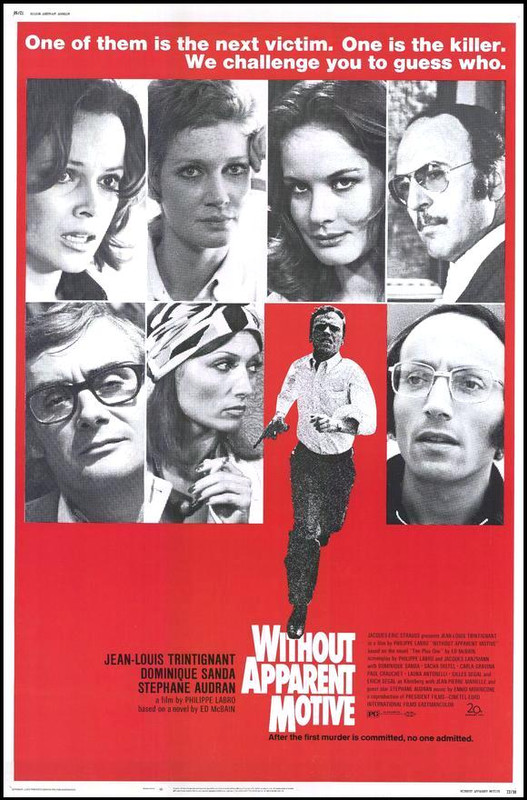
 |
|
|
|
|
|
 |
 |
 |
Posted: |
Jun 21, 2014 - 8:06 PM
|
|
|
|
By: |
Bob DiMucci
(Member)
|
THE LAST REBEL starring Joe Namath.
Must really suck!
LOL!
I saw THE LAST REBEL on broadcast TV about 30 years ago. It's no worse than your average Italian western, and better than some, since the principals aren't dubbed.
Screenwriter Warren Kiefer planned to direct THE LAST REBEL, but bowed out at the last minute in favor of first (and only) time director Denys McCoy, who was a nephew of painter Andrew Wyeth. The production marked the first for Spangler Pictures, Ltd., owned by Larry Spangler, the producer of the television program "The Joe Namath Show," which was a short-lived 1969 syndicated talk show co-hosted by Namath and sportswriter Dick Schaap. Spangler had planned the film as a co-production with Spanish and Italian companies, but changed his mind after learning that quota requirements in the two countries would have necessitated replacing some already cast American actors with Italian and Spanish actors. Instead, he partnered with market research company Glendinning Companies, Inc., forming the corporation Glendinning Films. The picture’s budget was estimated at $1 million.
THE LAST REBEL was shot on location in Spain and Italy and at Rome's Cinecittà Studios in June 1970. In November 1970, Spangler was still seeking a distributor for the finished picture. Eventually, Columbia Pictures bought the distribution rights.
The film was blasted by most of the critics, although The New York Times termed it "harmless." Only Variety's "Whit" saw some merit in the film, which he labeled "a hit-and-miss affair." "Director Denys McCoy takes his material, however, and manages some good individual scenes and certain realism despite the uneven story line. Namath plays it cool throughout, and gives strength to his role. Jack Elam is a convincing heavy and Woody Strode is excellent, but Victoria George suffers from lack of characterization and Ty Hardin is lost as a sheriff. The color photography is high ranking and the music, while sometimes nearly drowning the spectator in its power, is suitable to the action."
The film's score, by Deep Purple co-founder Jon Lord and Tony Ashton, was originally released on a Capitol Records LP, and was finally issued on CD by Lord on his own CD label in 2002. Recorded at De Lane Lea's Dean Street studios (not their Kingsway studios where Deep Purple, amongst others, recorded), the score was put together, with engineer John Stewart, over three days in late September 1970, together with a further day three weeks later, in October, when the group numbers (with Ashton, Gardner & Dyke) were completed and the orchestral pieces were laid down.
THE LAST REBEL has never appeared on any home video format. The film was originally copyrighted by Orten Associates, who assigned the copyright to Columbia Pictures in 1998.
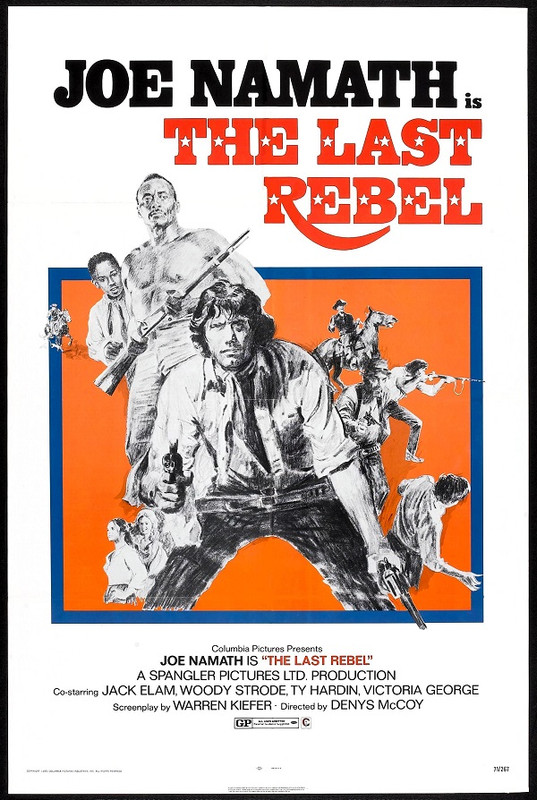
 |
|
|
|
|
|
 |
 |
 |
Posted: |
Jun 21, 2014 - 8:56 PM
|
|
|
|
By: |
Bob DiMucci
(Member)
|
Or how about "The Beginning Or The End", which dealt with the development of the atomic bomb, which the Warner Archive Collection promised that they would put out on D.V.D.-R., but never did.
In December 1945, M-G-M, Paramount, and Twentieth Century-Fox were engaged in a race to be the first studio to produce a motion picture about the atomic bomb. M-G-M gave the picture top priority, and had story writer Robert Considine rush pages of his treatment, as he completed them, to the studio script writers. Producer Hal Wallis, who was preparing a $1,500,000 atomic picture entitled TOP SECRET for Paramount, agreed to cancel his film, merge his story property with M-G-M's and serve as an advisor on the M-G-M picture, titled THE BEGINNING OR THE END. Wallis, the first to enter the atomic picture race, negotiated an initial payment plus a substantial gross percentage of the picture's profits in exchange for his story material and research.
The opening credits of the film were preceded by a mock newsreel, in which Hume Cronyn, Brian Donlevy, and other actors, portraying their characters from the film, are seen burying a time capsule commemorating the discovery of atomic power. Many of the individuals depicted in the film were well-known government figures and scientists who were directly or indirectly involved in the production of the atomic bomb during World War II. Among those portrayed were Harry S. Truman, president of the United States at the time of the bombing of Hiroshima, Japan (played by Art Baker); Major General Leslie R. Groves, head of the atomic bomb project (Donlevy); J. Robert Oppenheimer, head of the team of scientists who developed the bomb (Cronyn); and Secretary of War Henry Stimson (played by Erville Alderson). M-G-M consulted with Groves, Oppenheimer, and Truman during the preparation of the film. Major Charles Sweeney, the pilot of the airplane that dropped the atomic bomb on Nagasaki, Japan, was commissioned by M-G-M to serve as a military technical advisor.
As early as December 1945, it was announced that M-G-M stars Spencer Tracy, Clark Gable and Van Johnson were "being groomed for roles" in the film, but none of them eventually were cast. In June 1946, a controversy erupted when former First Lady Eleanor Roosevelt objected to the casting of Lionel Barrymore as Franklin D. Roosevelt, alleging that the actor had made disparaging remarks about the late president. Production on the film had already begun when the studio decided to hold up Barrymore's scenes until Mrs. Roosevelt had the opportunity to respond to a letter from Barrymore, in which he explained his political statements. Though Barrymore claimed that his remarks were misinterpreted, the Roosevelt family continued to disapprove of the casting, and M-G-M replaced him with Godfrey Tearle. M-G-M also consulted with Archbishop Francis J. Spellman of New York, who had offered a special Mass on the island of Tinian for American crew members who were assigned to bomb Hiroshima and Nagasaki.
The film marked the motion picture debut of Guy Williams, who went on to play the title character in the Walt Disney television series “Zorro” (1957-1959), as well as "Professor John Robinson" in the series “Lost in Space” (1965-1968). Nine of the men who portrayed crew members of the "Enola Gay" were actual World War II veterans. Some filming took place in Fort Worth, TX; Los Alamos, NM; Oak Ridge, TN; and at various university campuses. The release of the film, originally set for October 1946, was postponed as a result of M-G-M studio head Louis B. Mayer's decision to add to the film actual footage of the bombing of Hiroshima. The film had its premiere in Washington, DC on 19 February 1947.
Daniele Amfitheatrof scored the film. Re-recorded excerpts of the score appear on a Label X CD.

 |
|
|
|
|
|
 |
Not a television series, but a single program created by Orson Welles as a pilot for a proposed anthology series for Desilu: THE FOUNTAIN OF YOUTH.
Looks like you can currently watch this on You Tube. No DVD yet so it's posted thanks.
|
|
|
|
|
 |
LE CHAT-72?
I remember you asking about this French film before. I cannot verify there's a legitimate version with subtitles so it's posted, thanks. (It's a 1971 film btw)
|
|
|
|
|
 |
Here are a few for you Arthur.
Antenna TV ran a number of hard to see war films for Memorial Day, including;
The 1961 Korean war film, All The Young Men, with Alan Ladd, Sidney Poitier, and James Darren. It was only ever out on VHS domestically.
The really obscure 1958 Korean war film, Tank Battalion, with Frank Gorshin and Edward G. Robinson...Jr.
Two others aired were Cockleshell Heroes, and The Victors. No domestic DVDs or blu-rays, only R2 releases.
Greg Espinoza
All the Young Men and Tank Battalion have both been posted thanks. The others as you've said are available from Amazon U.K. and look like acceptable legitimate transfers.
|
|
|
|
|
 |
Re; THE GREAT WALTZ
there was an excellent UK series that aired in 1978 or so , THE STRAUSS FAMILY.
Is that available?
brm
Available but pricey on USA Region 1. Much cheaper from Region 2 UK (see Amazon).
|
|
|
|
|
 |
Or how about "The Beginning Or The End", which dealt with the development of the atomic bomb, which the Warner Archive Collection promised that they would put out on D.V.D.-R., but never did.
Perhaps they ran into "rights issues" but since no DVD exists, it's posted thanks.
|
|
|
|
|
 |
THE LAST REBEL starring Joe Namath.
Must really suck!
LOL!
Not on DVD anywhere so it's posted thanks.
|
|
|
|
|
 |
An avowed devotee of American detective thrillers, French journalist-filmmaker Philippe Labro based WITHOUT APPARENT MOTIVE (1971) on one of Ed McBain’s 87th Precinct novels, Ten Plus One, changing the locale from a bustling U.S. metropolis to the French Riviera and structuring the film with homages to Raymond Chandler, Dashiell Hammett, and the hard-boiled Humphrey Bogart pictures of the 1940s. The film starred Jean-Louis Trintignant, Dominique Sanda, and Laura Antonelli, and had a effective supporting role by writer Erich Segal. Ennio Morricone scored the film. Upon the movie’s Paris premiere, Variety’s “Mosk” called it “ a bright and successful action picture” that not only “captures the spirit, fun and drive of its forerunners” “but stands on its own due to fine playing, brisk plotting and effective direction.”
With the film’s U.S. release in 1972, Pauline Kael said that “You can have a felicitous good time” at this “affectionate, unconcealed imitation of THE BIG SLEEP.” According to Kael, WITHOUT APPARENT MOTIVE proved that “the French can now do better with a certain kind of laconic American thriller involving the corrupt rich than the Americans can . . . Labro is a fine technician, and he has assimilated the American genre into his own style; his mind is steeped in Raymond Chandler, but the movie comes out classically French.” And Judith Crist termed the film “a good tough ‘tec movie . . . old-fashioned in the best sense.”
WITHOUT APPARENT MOTIVE has not had any home video release of which I am aware. Although it was originally released in the U.S. by 20th Century Fox, the film may have fallen into the public domain.
In 1996, copyright was automatically restored in certain foreign works that were then in the public domain in the United States but were protected by copyright in the source country. Owners of a restored work were directed to notify reliance parties if the owner of the rights planned to enforce their rights. One means of notification was filing with the Copyright Office a Notice of Intent to Enforce (NIE) a Restored Copyright. On 31 December 1997, Philippe Labro filed a “Notice of intent to enforce a copyright restored under the Uruguay Round Agreements Act” for three films that he directed, on behalf of himself and Ritz Productions, SARL. The three films were WITHOUT APPARENT MOTIVE (Sans mobile apparent), CHANCE AND VIOLENCE (Le hasard et la violence), and THE HEIR (L'heritier). So, it appears as if control of the film has reverted to the director, who is now 76 years old.
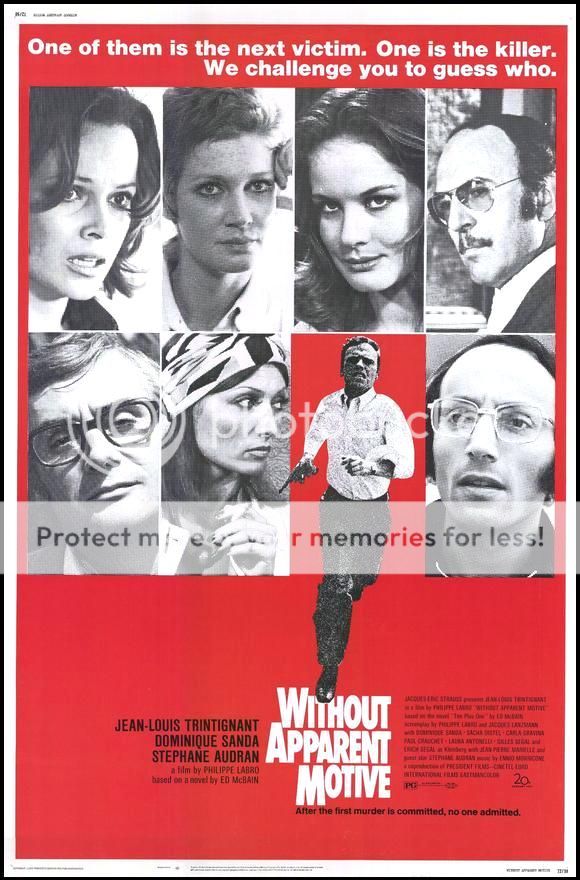
No DVD to be found anywhere so this too is posted on the board. Thanks for this and the other posters Bob.
 |
|
|
|
|
|
 |
 |
 |
Posted: |
Jun 23, 2014 - 1:49 PM
|
|
|
|
By: |
Bob DiMucci
(Member)
|
Writer-producer-director-actor Jules Dassin directed his wife Melina Mercouri in nine films. Their seventh pairing was for 1970’s PROMISE AT DAWN. Dassin wrote the screenplay based upon a 1960 autobiographical memoir by Roman Gary and a 1961 play (”First Love”) by Samuel Taylor. Mercouri played a flamboyant Russian actress during the 1920s, who devotes her life to making her ambitions for her son come true.
The U.S. – French coproduction cost about $3 million, and was filmed in Nice, Paris and Russia. Georges Delerue scored the film. Released by Avco Embassy, the film opened in the U.S. on 16 December 1970, in order to qualify for the 1970 Academy Awards. However, the film did not receive any nominations, despite numerous predictions that Miss Mercouri was a very strong contender for the best actress award. Variety’s “Mosk” felt that Mercouri “should be in a position for prize nominations.” Cue’s William Wolf held that Mercouri “gives the performance of her already applauded career.” And in a Sunday piece for the New York Daily News, written prior to the picture’s Manhattan opening, Wanda Hale declared that “Those who have seen it say they can’t see how she can miss winning the Oscar.” Although snubbed by the Academy, Mercouri did receive a Golden Globe nomination as Best Actress in a Drama, ultimately losing to Ali MacGraw for LOVE STORY.
The reaction to the film as a whole was decidedly mixed. In a four-star review, Wanda Hale called the film “a thing of beauty and joy.” And William Wolf called the “enchanting” picture “the kind of joyously old-world film that invites you to participate pleasurably in the sentiment.” Taking a contrary view, Newsday’s Joseph Gelmis felt that “PROMISE AT DAWN has been turned into an old-fashioned tearjerker, gussied up with slick flashbacks, slow motion, stop action and out-of-focus photography.” And Roger Ebert lamented that, aside from Mercouri’s “magnificent” performance, “the movie itself is rather impossible to stomach.”
In the early days of VHS, PROMISE AT DAWN was issued on cassette by Magnetic Video, but has been unavailable since. In 2002, Disques CineMusique issued the Polydor soundtrack LP on CD. It would be nice to have a DVD of the film, so we could listen to the score within the film.
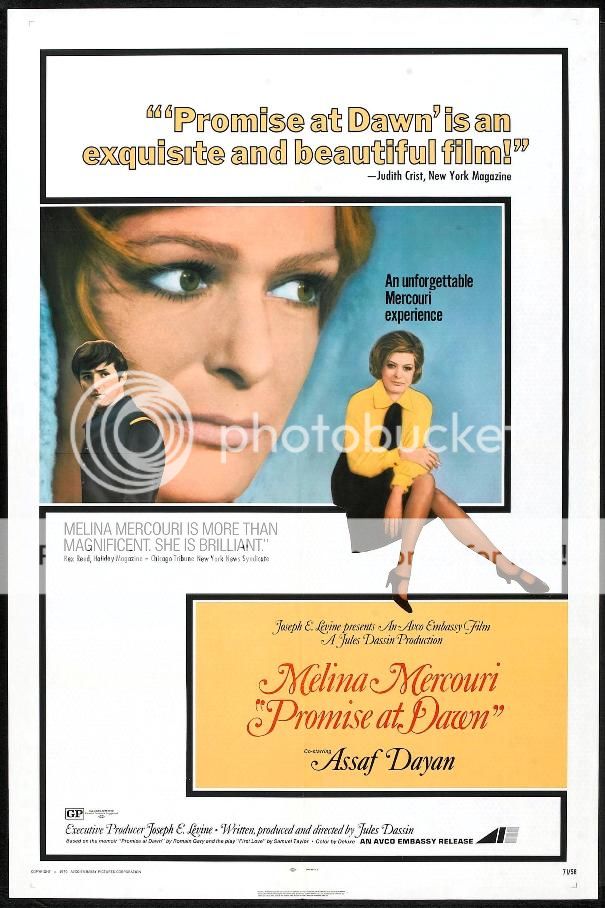
 |
|
|
|
|
|
 |
A COVENANT WITH DEATH - w/George Maharis
PICASSO SUMMER - w/great Legrand score
|
|
|
|
|
|
|
|
|
|
|
|
|
 |
 |
 |
Posted: |
Jun 27, 2014 - 4:08 PM
|
|
|
|
By: |
Joe E.
(Member)
|
Director John Korty is best known for his television work (The Autobiography of Miss Jane Pittman (1974), for which he won an Emmy) and his documentaries (Who Are the DeBolts? And Where Did They Get Nineteen Kids? (1977), for which he won an Oscar). But earlier in his career, he made several independent theatrical features. One of these was 1970’s RIVERRUN...
John Korty later cowrote and codirected (with Charles Swenson) the early '80s animated fantasy comedy adventure Twice Upon a Time, with one George Lucas as executive producer. The film has a somewhat complicated history (albeit perhaps not so much by the standards of this thread, given the histories of so many other movies on it), with multiple versions extant, none of which have gotten really high-profile releases, although one version was readily available on video for a while starting in the early '90s, several years after the film was originally made and (barely) released. Having grown up obsessed with anything George Lucas was even tangentially connected with, I had a huge interest in the movie for many years even without being able to see it (though I did and still do have a picture book relating a version of the story, albeit a substantially altered one), and one day in I think October of 1990 I finally wound up actually calling an office at Warner Bros. on the phone - I know longer remember how I even got the number, but I did - and bothering some poor WB employee about it, asking whether it was available at all, when it would be if it wasn't already, etc. Not too many months later, in 1991, it finally came out on video, and I was not disappointed. I always liked to think my phone call helped give just that tiny extra push that helped finally get the movie out there, even if I didn't and don't seriously believe that. I didn't learn until later still just how complicated the movie's history was, what with the different versions and all, but I loved the movie as it was.
One version was briefly seen on HBO, and another was the one released years later on VHS and laserdisc, though of course those are no longer available. I think it's been seen more recently on cable and/or streaming, but there's no DVD or Blu-ray.
http://en.m.wikipedia.org/wiki/Twice_Upon_a_Time_(1983_film)

_________________________________________________________________________
I see the thread's initial post calls not just for movies but also TV shows, but there don't seem to be (m)any mentioned so far, so here are a couple I'd like to have. First, in keeping with the theme of lesser-known Lucasfilm productions, is Maniac Mansion, a slightly deranged but gentle-natured, family-themed and family-oriented, single camera sitcom, running for three seasons from 1990 to 1993 on the Family Channel, appropriately enough. Adapted very loosely from Lucasfilm Games' much-acclaimed 1987 computer game of the same name, the show starred SCTV's Joe Flaherty as quasi-mad scientist and family man Fred Edison, who works in the home he shares with his wife Casey, their three kids Tina, Ike and Turner, and their uncle Harry and aunt Idella, and live a relatively normal family existence, save for one of Fred's projects having accidentally given toddler Turner the body of a fully-grown, fortysomething man but still with the mind of a child, while uncle Harry gets the body of a housefly. Eugene Levy was one of the creative personnel who developed the show, and guest-starred in season 3; other notable guests included various other SCTV vets, David Cronenberg, and José Ferrer.
http://en.wikipedia.org/wiki/Maniac_Mansion_(TV_series)
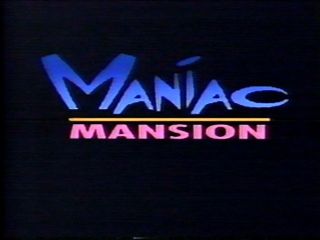
One more early '90s show I'm dying to see again is Grand, which ran for two seasons in 1990 (both seasons were short, and it began running in January, so the entire run was within the one calendar year). Grand was a comedy of manners concerning the interconnected lives of three families at different socioeconomic strata in and around the fictional town of Grand, Pennsylvania, home of Weldon Piano Works. The show starred John Randolph, Pamela Reed, Bonnie Hunt, Michael McKean, John Neville, Joel Murray, Sara Rue, and Andrew Lauer. Though well-received from the beginning, the network dragged its feet on a renewal decision (or at least notifying the showrunners of their decision), and the makers assumed the series had been dropped, and so ended the thirteen-episode initial season the town demolished by a tornado and everyone going missing, in an episode titled "Blow Off," apparently referring not only to the story but also the network's handling of the show. When NBC finally let them know they'd renewed after all for another thirteen episodes, some key creative personnel had already moved on and were no longer available. The show arguably suffered a slight dip in quality for the second season but still remained strong, but between this and the usual timeslot rescheduling and promotion shenanigans and whatnot, the ratings declined, and the show was finally cancelled after its second season, with its 26th and final episode never airing. AFAIK, the show has never been legitimately released or shown anywhere since its original run, not even in downloads or streaming, although there's a *ahem* "private label" DVD circulating out there (cover shown below), albeit missing episodes and sourced from low-quality, homemade VHS recordings of the broadcasts. It really deserves better.
http://en.m.wikipedia.org/wiki/Grand_(TV_series)
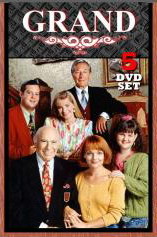
 |
|
|
|
|
|
 |
Writer-producer-director-actor Jules Dassin directed his wife Melina Mercouri in nine films. Their seventh pairing was for 1970’s PROMISE AT DAWN. Dassin wrote the screenplay based upon a 1960 autobiographical memoir by Roman Gary and a 1961 play (”First Love”) by Samuel Taylor. Mercouri played a flamboyant Russian actress during the 1920s, who devotes her life to making her ambitions for her son come true.
The U.S. – French coproduction cost about $3 million, and was filmed in Nice, Paris and Russia. Georges Delerue scored the film. Released by Avco Embassy, the film opened in the U.S. on 16 December 1970, in order to qualify for the 1970 Academy Awards. However, the film did not receive any nominations, despite numerous predictions that Miss Mercouri was a very strong contender for the best actress award. Variety’s “Mosk” felt that Mercouri “should be in a position for prize nominations.” Cue’s William Wolf held that Mercouri “gives the performance of her already applauded career.” And in a Sunday piece for the New York Daily News, written prior to the picture’s Manhattan opening, Wanda Hale declared that “Those who have seen it say they can’t see how she can miss winning the Oscar.” Although snubbed by the Academy, Mercouri did receive a Golden Globe nomination as Best Actress in a Drama, ultimately losing to Ali MacGraw for LOVE STORY.
The reaction to the film as a whole was decidedly mixed. In a four-star review, Wanda Hale called the film “a thing of beauty and joy.” And William Wolf called the “enchanting” picture “the kind of joyously old-world film that invites you to participate pleasurably in the sentiment.” Taking a contrary view, Newsday’s Joseph Gelmis felt that “PROMISE AT DAWN has been turned into an old-fashioned tearjerker, gussied up with slick flashbacks, slow motion, stop action and out-of-focus photography.” And Roger Ebert lamented that, aside from Mercouri’s “magnificent” performance, “the movie itself is rather impossible to stomach.”
In the early days of VHS, PROMISE AT DAWN was issued on cassette by Magnetic Video, but has been unavailable since. In 2002, Disques CineMusique issued the Polydor soundtrack LP on CD. It would be nice to have a DVD of the film, so we could listen to the score within the film.

Thanks for that Bob, it's posted.
 |
|
|
|
|
|
 |
Director John Korty is best known for his television work (The Autobiography of Miss Jane Pittman (1974), for which he won an Emmy) and his documentaries (Who Are the DeBolts? And Where Did They Get Nineteen Kids? (1977), for which he won an Oscar). But earlier in his career, he made several independent theatrical features. One of these was 1970’s RIVERRUN...
John Korty later cowrote and codirected (with Charles Swenson) the early '80s animated fantasy comedy adventure Twice Upon a Time, with one George Lucas as executive producer. The film has a somewhat complicated history (albeit perhaps not so much by the standards of this thread, given the histories of so many other movies on it), with multiple versions extant, none of which have gotten really high-profile releases, although one version was readily available on video for a while starting in the early '90s, several years after the film was originally made and (barely) released. Having grown up obsessed with anything George Lucas was even tangentially connected with, I had a huge interest in the movie for many years even without being able to see it (though I did and still do have a picture book relating a version of the story, albeit a substantially altered one), and one day in I think October of 1990 I finally wound up actually calling an office at Warner Bros. on the phone - I know longer remember how I even got the number, but I did - and bothering some poor WB employee about it, asking whether it was available at all, when it would be if it wasn't already, etc. Not too many months later, in 1991, it finally came out on video, and I was not disappointed. I always liked to think my phone call helped give just that tiny extra push that helped finally get the movie out there, even if I didn't and don't seriously believe that. I didn't learn until later still just how complicated the movie's history was, what with the different versions and all, but I loved the movie as it was.
One version was briefly seen on HBO, and another was the one released years later on VHS and laserdisc, though of course those are no longer available. I think it's been seen more recently on cable and/or streaming, but there's no DVD or Blu-ray.
http://en.m.wikipedia.org/wiki/Twice_Upon_a_Time_(1983_film)

_________________________________________________________________________
I see the thread's initial post calls not just for movies but also TV shows, but there don't seem to be (m)any mentioned so far, so here are a couple I'd like to have. First, in keeping with the theme of lesser-known Lucasfilm productions, is Maniac Mansion, a slightly deranged but gentle-natured, family-themed and family-oriented, single camera sitcom, running for three seasons from 1990 to 1993 on the Family Channel, appropriately enough. Adapted very loosely from Lucasfilm Games' much-acclaimed 1987 computer game of the same name, the show starred SCTV's Joe Flaherty as quasi-mad scientist and family man Fred Edison, who works in the home he shares with his wife Casey, their three kids Tina, Ike and Turner, and their uncle Harry and aunt Idella, and live a relatively normal family existence, save for one of Fred's projects having accidentally given toddler Turner the body of a fully-grown, fortysomething man but still with the mind of a child, while uncle Harry gets the body of a housefly. Eugene Levy was one of the creative personnel who developed the show, and guest-starred in season 3; other notable guests included various other SCTV vets, David Cronenberg, and José Ferrer.
http://en.wikipedia.org/wiki/Maniac_Mansion_(TV_series)

One more early '90s show I'm dying to see again is Grand, which ran for two seasons in 1990 (both seasons were short, and it began running in January, so the entire run was within the one calendar year). Grand was a comedy of manners concerning the interconnected lives of three families at different socioeconomic strata in and around the fictional town of Grand, Pennsylvania, home of Weldon Piano Works. The show starred John Randolph, Pamela Reed, Bonnie Hunt, Michael McKean, John Neville, Joel Murray, Sara Rue, and Andrew Lauer. Though well-received from the beginning, the network dragged its feet on a renewal decision (or at least notifying the showrunners of their decision), and the makers assumed the series had been dropped, and so ended the thirteen-episode initial season the town demolished by a tornado and everyone going missing, in an episode titled "Blow Off," apparently referring not only to the story but also the network's handling of the show. When NBC finally let them know they'd renewed after all for another thirteen episodes, some key creative personnel had already moved on and were no longer available. The show arguably suffered a slight dip in quality for the second season but still remained strong, but between this and the usual timeslot rescheduling and promotion shenanigans and whatnot, the ratings declined, and the show was finally cancelled after its second season, with its 26th and final episode never airing. AFAIK, the show has never been legitimately released or shown anywhere since its original run, not even in downloads or streaming, although there's a *ahem* "private label" DVD circulating out there (cover shown below), albeit missing episodes and sourced from low-quality, homemade VHS recordings of the broadcasts. It really deserves better.
http://en.m.wikipedia.org/wiki/Grand_(TV_series)

All 3 of these are posted thanks. Care to have a look?
http://www.pinterest.com/arthurgrant9883/the-community-chest-most-wanted-by-fans-on-dvd-or-/
 |
|
|
|
|
|
 |
 |
 |
Posted: |
Jun 29, 2014 - 12:07 PM
|
|
|
|
By: |
Bob DiMucci
(Member)
|
Hungarian-born Ján Kadár began his directing career in Bratislava, Slovakia, after World War II with the documentary “Life Is Rising from the Ruins” (“Na troskách vyrastá život,” 1945). Starting in 1952, and working with his directing partner Elmar Klos, Kadár made a number of films that touted the obligatory Marxist-Leninist doctrine and adhered to Socialist-Realist filmmaking, while also bouncing between comedy and blatant propaganda.
Kadár’s biggest success came in 1965 with “The Shop On Main Street,” about the Aryanization program during World War II in the Slovak State. The film played Cannes and later won the Academy Award for Best Foreign Language Film.
In late July 1968, Kadár began work on the first motion picture co-production between Czechoslovakia and the United States. MPO Videotronics, one of the largest American producers of television commercials and industrial films, had signed Kadár and Klos to an exclusive one-year contract. Although Klos is credited onscreen as “associate director” and with co-writing the screenplay, according to Variety he functioned “more on the lines of a producer, although Julius Potocsny gets this billing.” Potocsny was an executive with MPO Videotronics, the American company co-financing the picture.
The working title of the Czechoslovakian-U.S. co-production was “Adrift in the Water.” It was based on the 1937 novel Etwas treibt im wasser (Something Is Adrift in the Water) by Lajos Zilahy. The film’s eventual title, when it was released in the U.S., was ADRIFT, and it was released in Czechoslovakia as “Touha zvaná Anada” (“A Longing Called Anada”). The film is about a fisherman who saves Anada, a woman adrift, from drowning. He takes her to his home, and protects her. Eventually, she occupies a larger place in his life than was to be expected.
ADRIFT was filmed on location on the banks of the Danube, just north of the town of Bratislava, and at Studio Barrandov in Prague. The picture was twenty-five percent completed when, on 20 August 1968, the Soviet Union invaded Czechoslovakia and production had to be shut down, in large part because the Soviets erected a temporary military bridge at the shooting location.
Kadár then came to the U.S., where he directed his first English-language film, THE ANGEL LEVINE, which was eventually released in 1970. In mid-1969, however, after Russian restrictions in Czechoslovakia were relaxed, Kadár was able to return to his native country. Re-assembling the same cast and crew, Kadár finished production on ADRIFT.
Kadár originally planned on producing Czech and English-language versions of the film, both of which would be distributed in the U.S. But the English version was abandoned, and ADRIFT was completely filmed in Czech. The finished picture was distributed in the U.S. with English subtitles. American model-actress Paula Pritchett, who played the woman adrift, needed to be dubbed into Czech for the film. Kadár had her say her lines phonetically in Czech rather than in English, so that the dubbing would match her mouth movements.
Upon its release in Czechoslovakia in 1970, ADRIFT established a record as the longest-running Czech film in its native country. But the film was later pulled out of Prague theatres and banned in Czechoslovakia because Kadár was considered to be "a defector” due to his prolonged absence from his home.
In the U.S, the film generally received a number of favorable reviews when it premiered in New York in June 1971. Saturday Review’s Arthur Knight hailed the film as “Hauntingly beautiful, thematically tantalizing—Kadár’s artful mingling of the past, present, and future is intriguing, and his small cast performs to perfection.” Judith Crist felt that “the success of this new work stems from [Kadár’s] return to his roots and the particular people and places that he can translate so touchingly into universal terms. . . . We are indeed set adrift in a film so rich with personal feeling that our private experience must formulate the response. And this is an exciting experience.”
But outside of New York, the critics were not so kind. Roger Ebert said that “after giving ADRIFT a lot of thought, I have arrived at the conclusion that its simplicity is not seeming, but actual [and] there is no philosophical lesson to be learned.” And the Los Angeles Times’ Charles Champlin said that ADRIFT “gathers together almost all the things which people who don’t like foreign films don’t like about foreign films. ADRIFT is very nearly uninterruptedly lugubrious.”
For the past 40 years, it’s been hard to tell who is correct about the film, since it has never had a English-accessible video release. Although there is a 1971 copyright statement for MPO Productions, Inc. in the opening credits, the picture was not registered for copyright. According to one source, the only extant print available with English subtitles was in very poor condition with many of the subtitles obscured. Recently, someone posted the film to YouTube. The subtitles were created afresh from a variety of sources and were combined with a Czech-language VHS rip. Although various reviews gave the film’s original running time as anywhere between 102-110 minutes, the YouTube version runs just 100 minutes.
ADRIFT marked the last collaboration between Jan Kadár and Elmar Klos. Kadár would go on to film LIES MY FATHER TOLD ME (1975) and several TV movies before his death in 1979.
http://www.youtube.com/watch?v=JUy6v6sOP4M
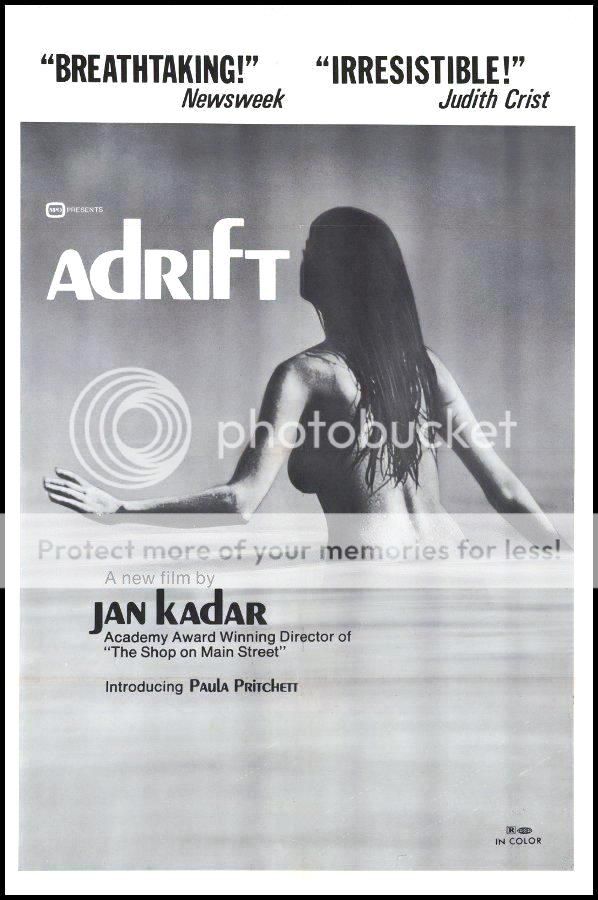
 |
|
|
|
 |
 |
 |
|
|
 |
 |
 |
| |
|
|
|
 |
|
 |
|
|
|


